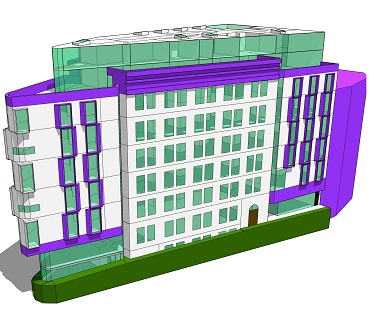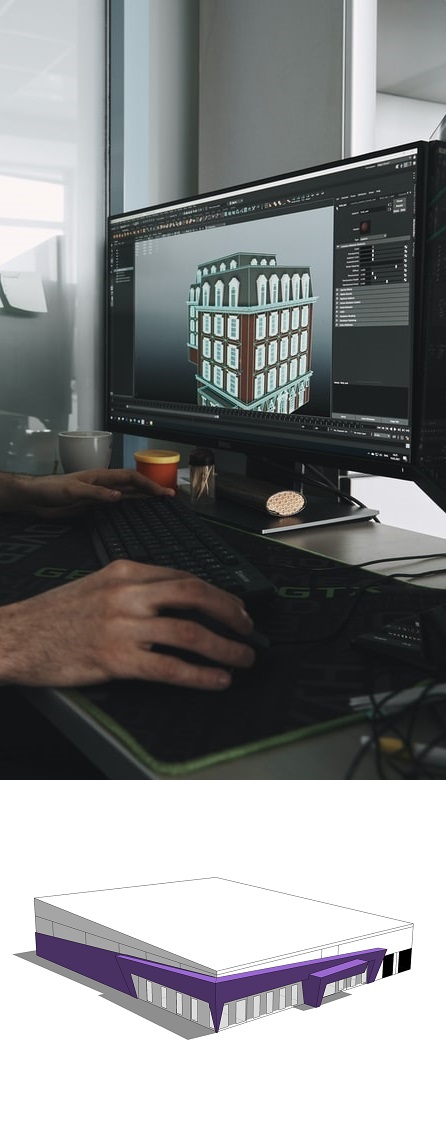Energy Model for JV2 or JV3 Assessment
Whether you are willing to use the Alternative Solutions for energy efficiency compliance or to get a Green Star Rating for ESD, you will need to undertake energy modelling in accordance with the relevant guidelines. Apart from elemental provisions, compliance with the NCC energy efficiency requirements could be met using either JV2 or JV3 Performance Solutions. But if you also aim to obtain some Green Stars as evidence of sustainable design, do you have to change your energy model to match the guidelines of the NCC? here, we try to find out the discrepancies and similarities between these energy models.

Should I keep my energy model?
If you are willing to assess whether your Green Star energy model complies with the NCC Section J (energy efficiency) through JV2 or JV3 modelling, many of the modelling items doesn’t need a change. This includes the geometry, thermal zones, operating profiles, internal heat gains from appliances, occupancy density, number and sizes of windows and many more. Below, we discuss the aspects of the discrepancy between the two modelling guidelines (i.e. NCC Vol 1.0, Specification JVb & Green Star Energy Use Calculation Guide 1.0).

Migration from Green Star model to JV2 model:
What are the major changes?
If you are willing to achieve compliance with the NCC energy efficiency requirements through JV2 Performance Solution, there are two major changes that need to be considered:
1- Services
Green Star Energy Use Calculation Guide requires you to model your Proposed Project services (heating, cooling, ventilation,…) according to the mechanical design and system operation in reality. This includes the capacity of the systems, COP and efficiencies, staging, control method and other important factors that have an impact on energy use. Green Star also mandates sets of modelling criteria for the Reference Project that differs from the Proposed Project. However, for JV2 modelling this needs to be changed either for the Reference or the Proposed Project. According to Green Star Energy Use Guide:
Specification JVb requires that Verification Method JV2 uses the same building services as the proposed project (clause Specification JVb 3(c)(i)), but this guide requires the use of a standard HVAC system (refer to Reference Project HVAC Systems).
[Green Star Energy Use Guide, Version 1, September 2021, Page 6]
This means that both models must have the same range and type of services, and also Reference Project services must not violate any of the NCC Vol 1.0, Part J5 to J8 requirements.
2- Hot water rates
Green Star Energy Use Calculation Guide requires you to use the Potable Water Use Calculator for the Reference and the Proposed Project domestic hot water consumption rates. Depending on the water efficiency of the Proposed water fixtures, in a Green Star model, Reference and Proposed hot water rates may not be the same. However, according to Green Star Energy Use Guide:
Specification JVb requires that Verification Method JV2 uses the same domestic hot water usage rate as the proposed project (clause Specification JVb 3(c)(viii)), but this guide requires the reference project usage value calculated by the Water Use calculator.
[Green Star Energy Use Guide, Version 1, September 2021, Page 6]
This means that both models must have the same domestic hot water consumption rates, so either Reference or the Proposed Project must be changed to match the other.
By checking and undertaking the above changes, the JV2 model can be extracted from a Green Star model and hence, Compliance with the NCC energy efficiency requirements can be investigated with minimum effort.
Migration from Green Star model to JV3 model:
What else needs to be changed?
If you are willing to achieve compliance with the NCC energy efficiency requirements through JV3 Performance Solution, apart from the two major changes that are mentioned above, you need to change some other criteria or at least, check if they are already in place.

3- Lighting controls
Neither NCC nor Green Star modelling guidelines require Reference Project to have lighting control sensors. However, if control devices are suggested in the Proposed Project, you must look up and compare the adjustment factors within the two references. This is due to the fact that both description and adjustment factors differ from one another comparing the two references. As an example, if there is a motion detector in a toilet, NCC allows for an adjustment factor of 0.4 [NCC Vol 1.0, Section J, Part J6, Table J6.2b] but Green Star allows for not more than 0.9 [Green Star Energy Use Calculation Guide, Table 73].
Although Green Star adjustment factors for lighting control devices seems more conservative, you must always check not to allow for less than the mandated value. Note that you should only double-check if you are undertaking JV3 modelling. If you are migrating your model for JV2 modelling, you are fine!
Provisions of natural light also differ between NCC and Green Star (though NCC must be met nevertheless). Where applicable, daylight criteria and conditions for each model must be updated according to specific daylighting metrics. Find out more…
4- Air quality
last but not least, complying with the Green Star Minimum Expectation for Air Quality means that the fresh air flow rates supplied by the ventilation system must be increased compared to the industry standards for non-residential buildings:
The building must provide a 50% improvement of outdoor air required by AS 1668.2:2012 to each space in the regularly occupied areas.
[Green Star Buildings Submission Guidelines, Version 1 (Revision A), July 2021, Page 77]
Although you can keep these increased rates for the Proposed Projects of Green Star, JV2 and JV3 models, you are not allowed to have these increased outdoor flow rates for the JV3 model Reference project. The reason is explained by the NCC:
A habitable room, office, shop, factory, workroom, sanitary compartment, bathroom, shower room, laundry and any other room occupied by a person for any purpose must have—
- natural ventilation complying with F4.6; or
- a mechanical ventilation or air-conditioning system complying with AS 1668.2 and AS/NZS 3666.1.
[NCC Vol 1.0, Part F4.5]
A mechanical ventilation system, including one that is part of an air-conditioning system, except where the mechanical system serves only one sole-occupancy unit in a Class 2 building or serves only a Class 4 part of a building, must…
…not exceed the minimum outdoor air quantity required by Part F4 by more than 20%,…
[NCC Vol 1.0, Part J5.3 (B)]
According to the above, you are not allowed to increase Reference fresh air flow rates by more than 20% of what is required in Part F4 (and consequently, values of AS1668.2, Table A1). For example,10 L/s/person is the minimum outdoor airflow rate for a bar according to AS1668.2. Green Star Minimum Expectation for Air Quality requires 50% more than that (15L/s/person), whereas NCC doesn’t allow you to go more than 20% (12 L/s/person). for a large commercial building, this discrepancy between the Reference and the Proposed Project ventilation rates, may create a major gap for thermal energy compliance. A good control strategy for large commercial buildings would be the use of CO2 sensors for demand-controlled ventilation, especially in crowded spaces like restaurants or bar areas.
